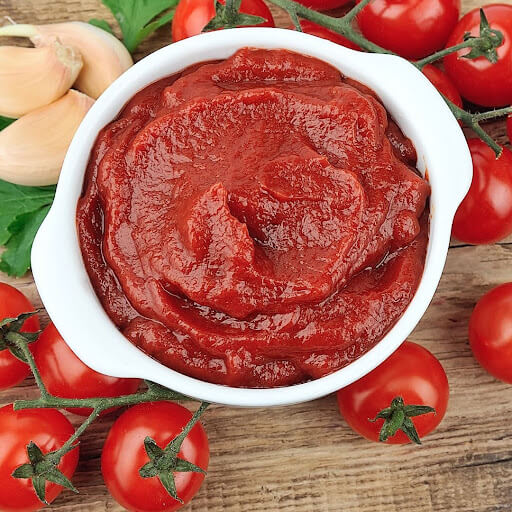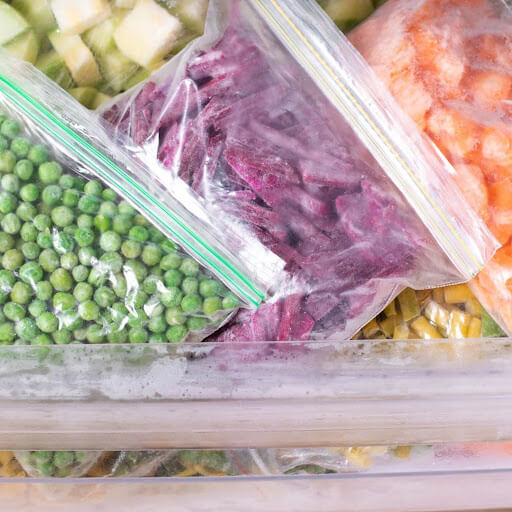Craving a burst of flavor without the daily scramble? Sometimes, you just want a hearty spaghetti sauce that’s ready to go when time is short.
Freezing provides that sweet relief, letting you stash homemade goodness away for the moment hunger strikes.
1. Why Freeze Your Sauce?
Ever whipped up a giant pot of saucy perfection, only to watch half of it languish in the fridge? No more. Embrace the simple power of freezing!
Tomato-based blends stand up beautifully under icy conditions, preserving that tangy spark and luscious texture. Creamy sauces, though, tend to get weird in the freezer – save them for the refrigerator if possible.
One more bonus? You won’t be stuck rummaging for tomato paste at the last second, because big-batch sauce can become the magical solution to those frantic weeknight dinners. Today’s extra is tomorrow’s sensational meal.

2. Preparing the Sauce for Freezing
Fresh from the stove, your sauce sizzles with flavor. Yet it needs to chill – literally – before heading to the freezer.
Let it rest until the temperature mellows. If you’re in a hurry, set your pot in a bowl of cold water and swirl gently to speed up the process, but be mindful of hygiene. Bacteria thrive if food lingers too long in a warm zone.
Keep an eye on that window: two hours is your max for letting hot sauce sit. Any longer, and the risk of spoilage shoots up. So, short story: cool it quickly, store it sooner, savor it later.
3. Best Containers and Portioning
Searching for the ideal storage vessel? Resealable glass jars offer good protection, but sturdy plastic and heavy-duty freezer bags also do the trick. The main rule is: don’t stuff them to the brim. Give the liquid some breathing room – frozen sauce expands and you don’t want a messy, frozen surprise.
Consider splitting your sauce into portions that match your typical meal sizes. Some individuals like smaller containers for single servings, while families might prefer hefty amounts for a crowd. Either way, label everything. You don’t want a random mystery tub lurking in the freezer, right?
4. How to Freeze
Follow these steps, and your sauce’s transition from stovetop stunner to freezer-friendly superstar will feel effortless:
- Label First: Scribble down the date and contents – avoid future guesswork.
- Fill Carefully: Spoon or pour the sauce into your chosen container, leaving that crucial expansion gap.
- Seal Tight: Press out excess air (if using bags) or ensure lids snap securely (if using jars). Airtight is everything.
- Lay It Flat (If Possible): Freezer bags freeze best lying down, saving space and speeding up the thawing process. If you’re using jars, place them upside down to prevent the air from entering through the tiny spaces between the lid and the glass.
Next stop: the freezer, where it should stay cozy for up to three months without turning dull. Beyond that timeframe, freezer burn might pop up, dulling flavors and reducing overall awesomeness.

5. Thawing and Reheating
Here’s where you get to revel in your own foresight. To thaw, the fridge method is slow but steady – leave it overnight, and it’ll be primed for reheating by the next day.
Feeling impatient? Plunge the sealed container into a bowl of cold water, swapping fresh water every so often. The microwave is your speediest companion, though keep an eye out for hot spots and stir often.
Once defrosted, warm the sauce gently over low heat. If it turns too thick, introduce a splash of broth or water. Stir occasionally, letting the flavors swirl back to life. This short process transforms your frosty creation into a ready-to-serve delight.
6. Extra Tips and Common Questions
Q: Can I Freeze My Pasta, Too?
A: Yes, you technically can freeze cooked noodles, but they might lose that distinctive al dente bite. If you go for it, slightly undercook them to prevent mushiness once thawed and warmed.
Q: What’s the Deal with Tomato Paste?
A: Some people love thick sauces. If that’s you, add a bit of tomato paste when cooking and you’ll capture a richer, bolder flavor profile that stands up well to freezing and reheating.
Q: Shelf Life
A: Aim to consume frozen sauce within three months for peak taste. After that, it may still be safe, but the vibrancy often fades. Who wants a bland jar of once-glorious sauce, anyway?

7. Conclusion
No more frantic hunts for missing ingredients or last-minute sauce runs. By freezing your spaghetti sauce, you’re preserving those irresistible tastes – and saving your own sanity on chaotic evenings. A quick thaw, a gentle warm-up, and dinner’s on the table with minimal fuss. Cook once, enjoy twice (or thrice!).
In short, an effortlessly great sauce is always within reach. Now that’s a strategy worth celebrating.










